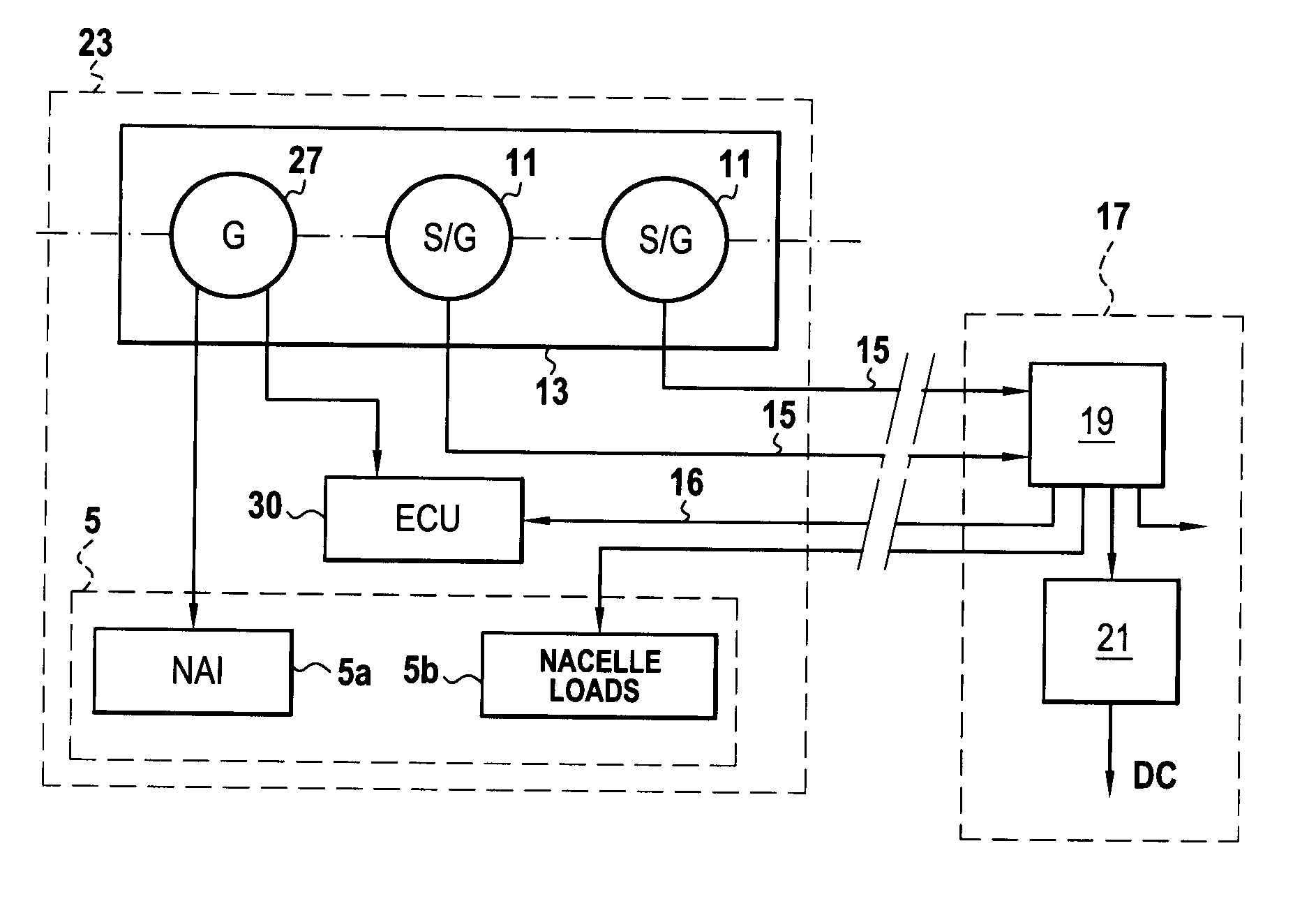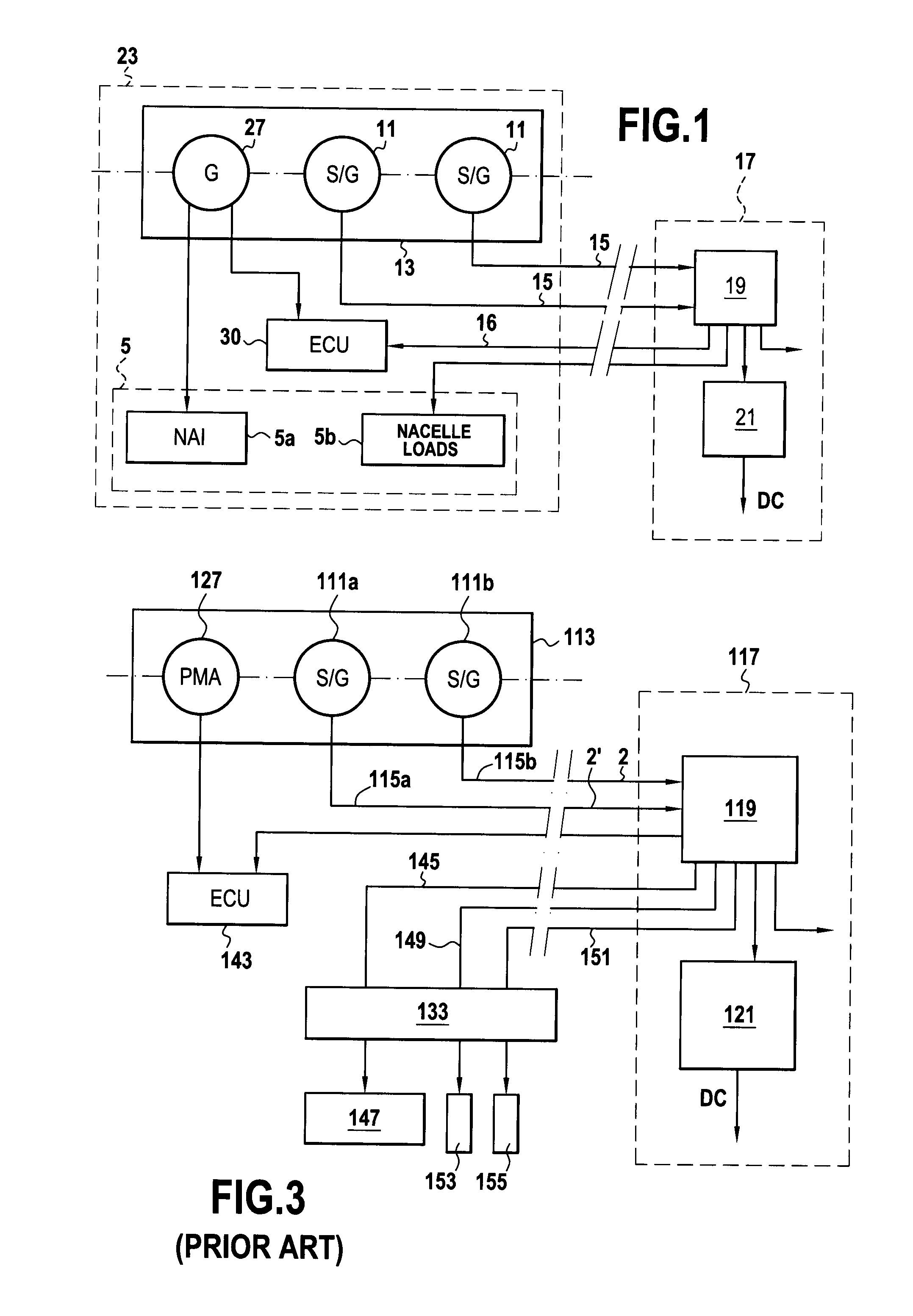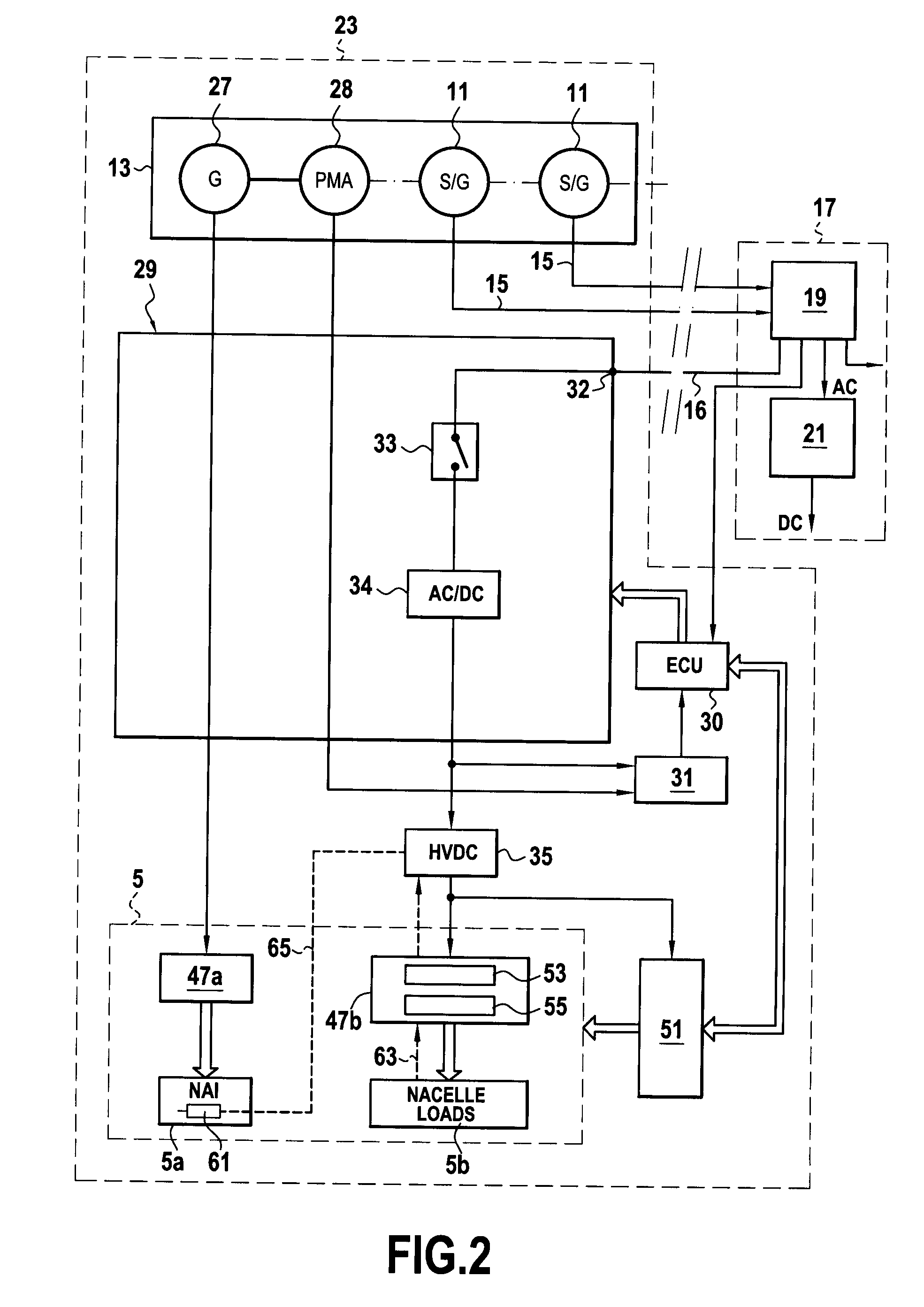Electrical power supply circuit in an aircraft for electrical equipment including a de-icing circuit
a technology of electrical equipment and de-icing circuit, which is applied in the direction of power installations, electric devices, transportation and packaging, etc., can solve the problems of running the risk of becoming dimension-determining or even prohibitive, and electrical losses that are not negligible, and achieve the effect of reducing the size of the converter
- Summary
- Abstract
- Description
- Claims
- Application Information
AI Technical Summary
Benefits of technology
Problems solved by technology
Method used
Image
Examples
Embodiment Construction
[0031]FIG. 1 is a circuit diagram for electrically powering and controlling a set 5 of pieces of electrical equipment 5a and 5b in an aircraft engine and in its surroundings, in particular in association with a gas turbine airplane engine.
[0032]The circuit of FIG. 1 comprises at least one generator 11 such as an S / G mounted on an accessory gearbox (represented by 13) that is mechanically coupled to a turbine shaft of the engine (not shown). The alternating voltage delivered by the S / G generator(s) 11 is conveyed by one or more lines 15 to an electrical network 17 for distributing electricity on board the airplane, referred to as the “on-board network”. A circuit 19 of the on-board network supplies one or more distribution buses with an alternating voltage that is typically regulated at 115 Vac or 230 Vac and at a frequency that varies as a function of the speed of rotation of the turbine shaft. The circuit 19 may also power a voltage converter circuit 21 for delivering a regulated D...
PUM
 Login to View More
Login to View More Abstract
Description
Claims
Application Information
 Login to View More
Login to View More - R&D
- Intellectual Property
- Life Sciences
- Materials
- Tech Scout
- Unparalleled Data Quality
- Higher Quality Content
- 60% Fewer Hallucinations
Browse by: Latest US Patents, China's latest patents, Technical Efficacy Thesaurus, Application Domain, Technology Topic, Popular Technical Reports.
© 2025 PatSnap. All rights reserved.Legal|Privacy policy|Modern Slavery Act Transparency Statement|Sitemap|About US| Contact US: help@patsnap.com



